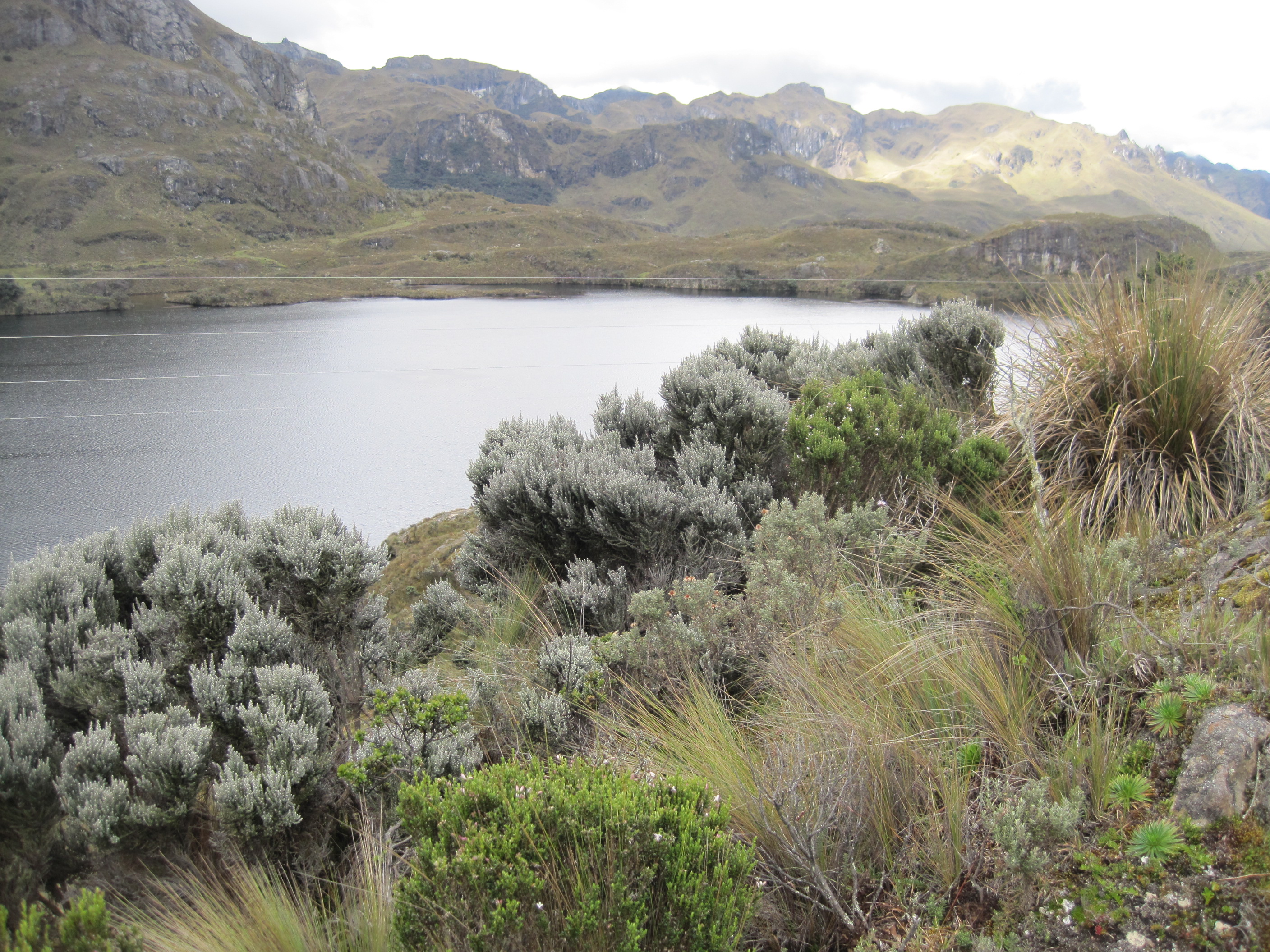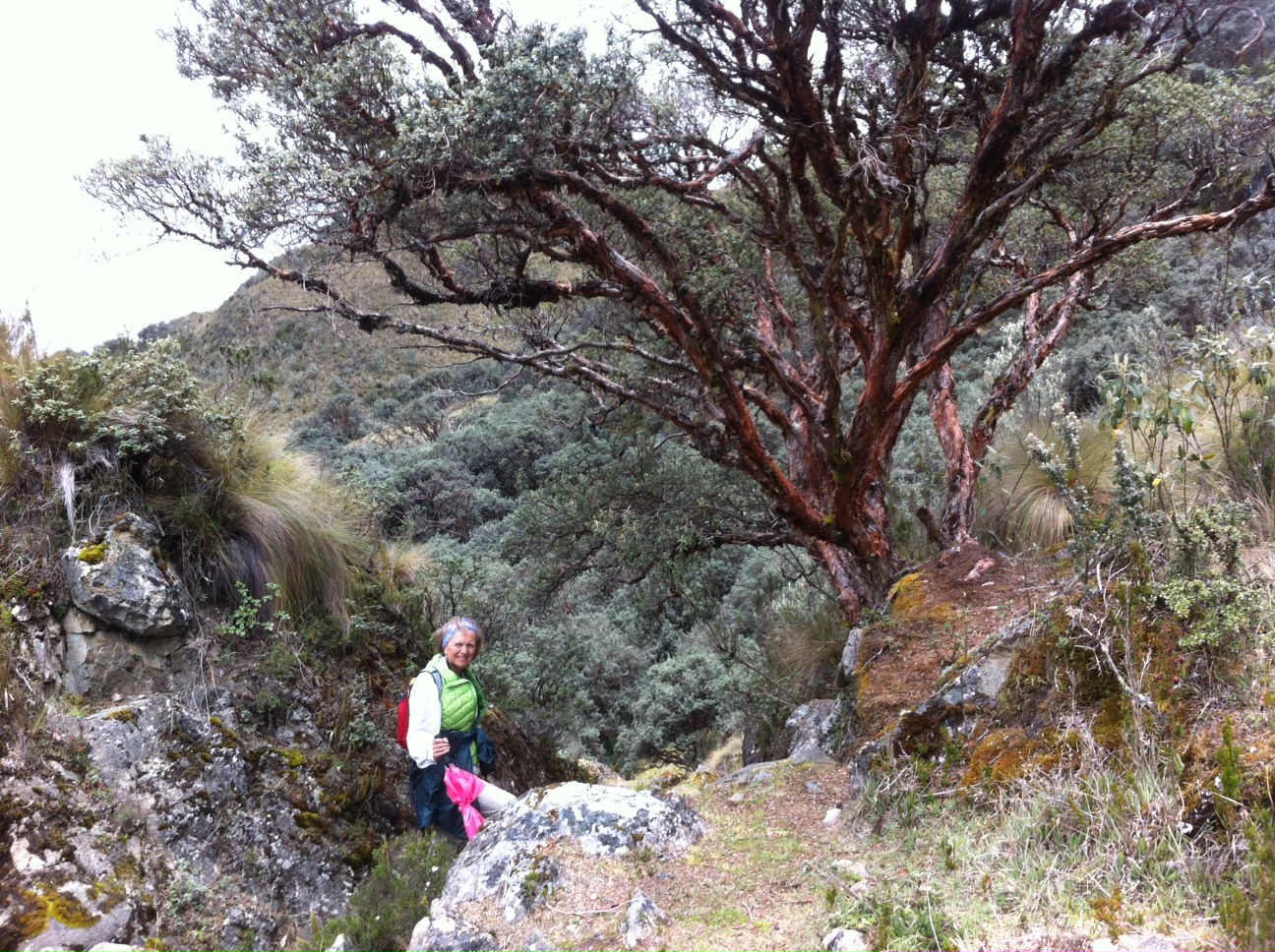20 miles west from Cuenca lies the Cajas National Park. Cajas in Quichua means
“gateway to the snowy mountains”. The area is between 10,000 and 17,000 feet high
and is covered by tundra. 270 crystal clear lakes are nestled in the high valleys. Here
grows the Polylepis tree, a gnarled evergreen tree which grows at the highest altitude
of any tree of the world. For several hours we hiked in this area. It was cold.


A Polylepis tree, growing less than half an inch per year
Another site close to Cuenca is Ingapirca, the largest known Inca ruins in Ecuador.
In the 15th century, only a short time before the arrival of the Spanish, the Incas
enlarged their empire and conquered the indigenous Cañaris. Ingapirca was already
a sacred place for the Cañaris, who worshipped the moon. The Incas built the temple
of the sun and included the worship of the moon. Most of the temple and castle
complex is built in the typical Inca way – the building stones were chiseled with
perfect precision and no mortar was used. The Cañaris survived the Incas and still
live in this area. They manage the site.

Before entering the temple of the sun (in the back), the high priests had to walk
through the cleansing water of the sun and moon (two half circles to the left)

Sun and moon circle

Temple of the sun
Here, every morning and evening, on a special seat east and west, the sun was
welcomed. The Incas also used Huandoc, or the Angel’s Trumpet, as a powerful
hallucinogen in order to communicate with the Gods.

Angel’s Trumpet
– Text and pictures contributed by Garyo –
